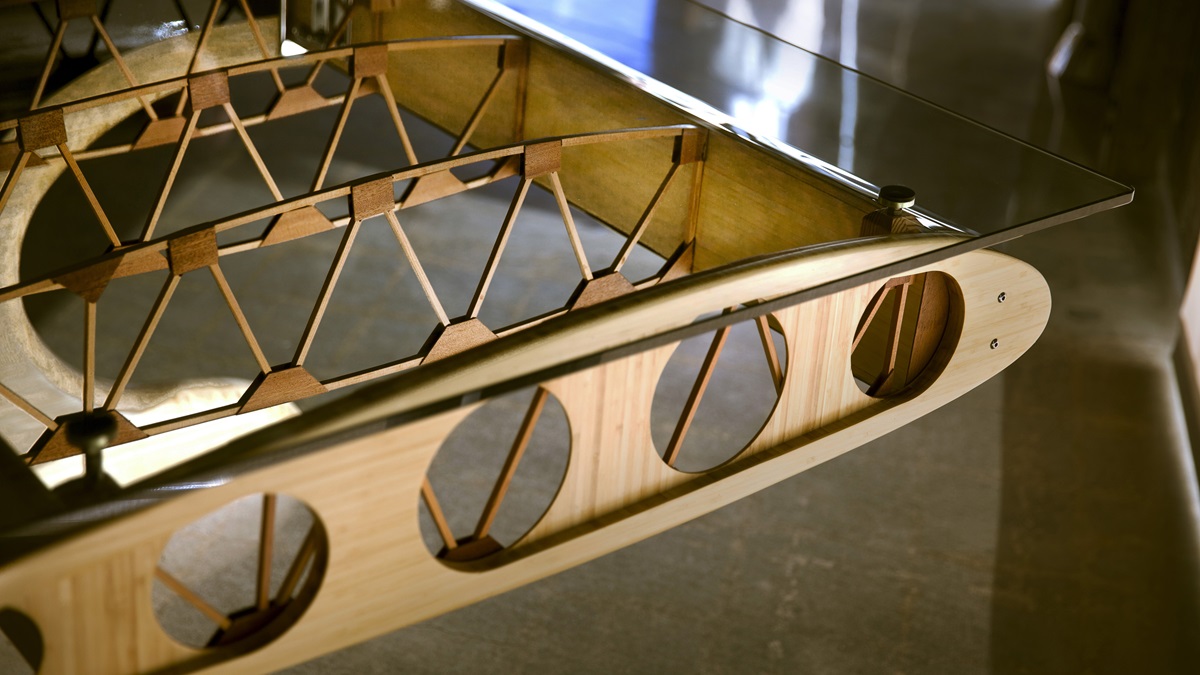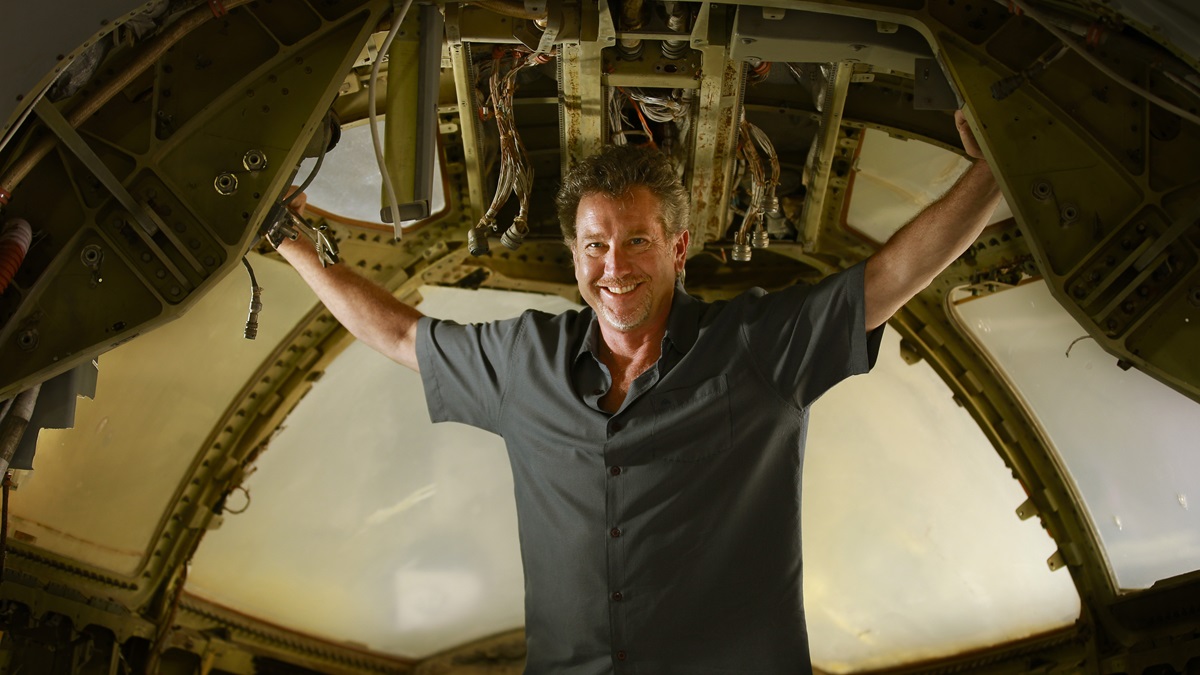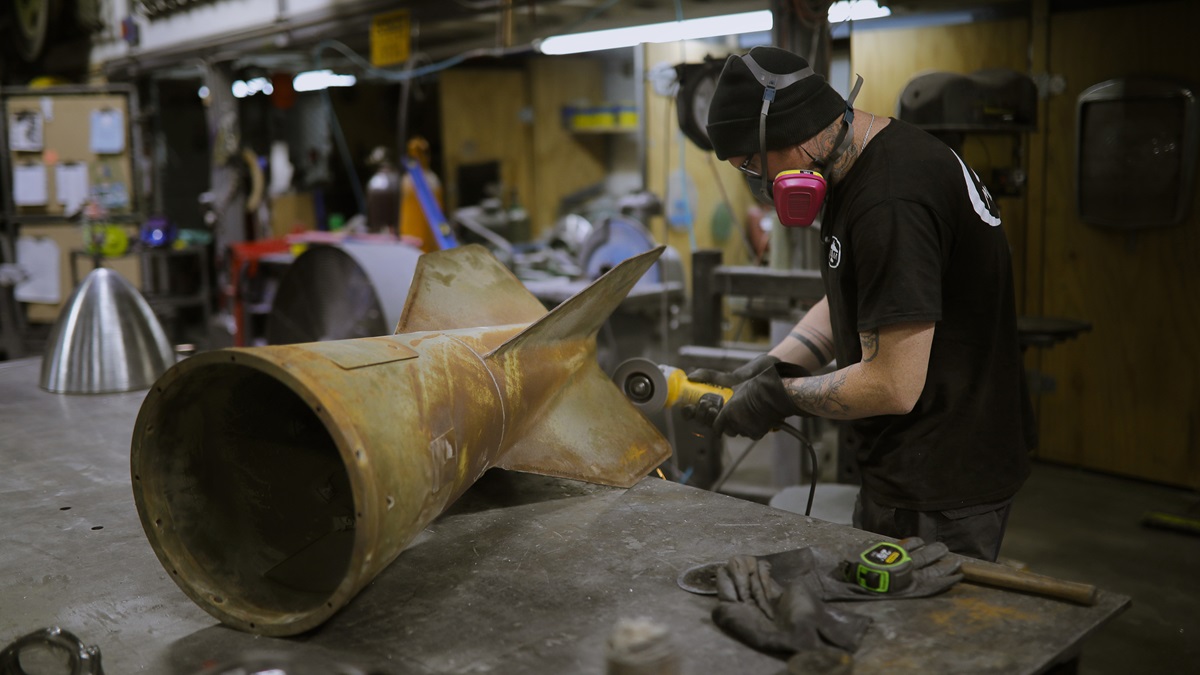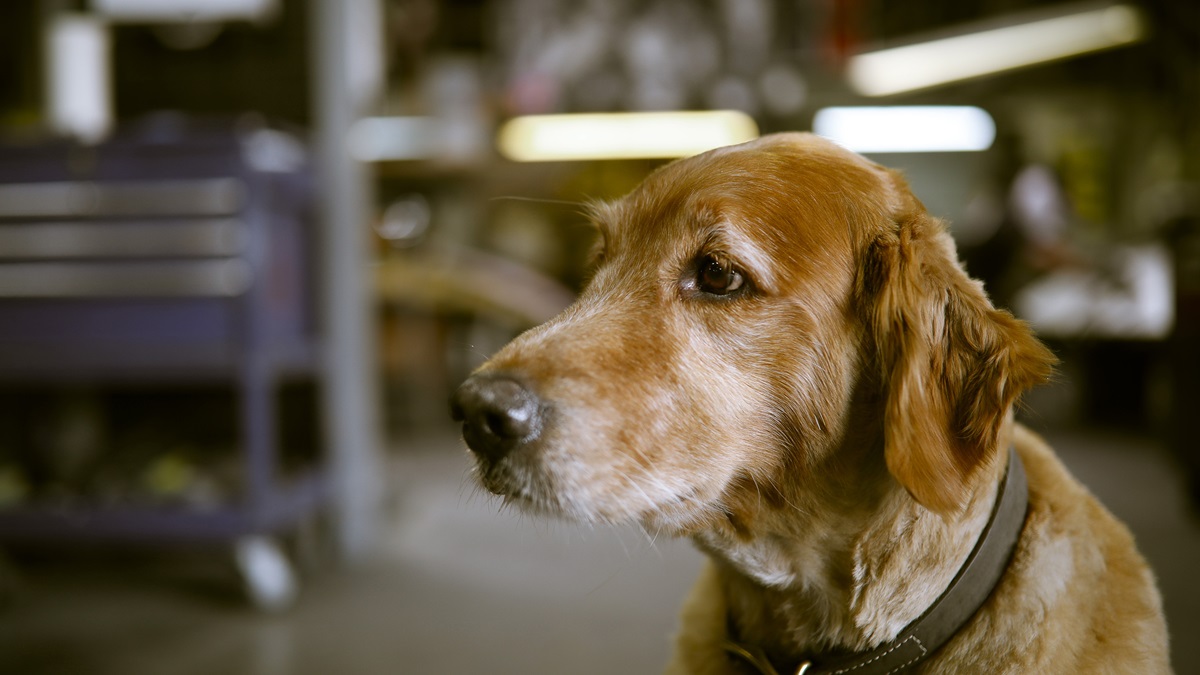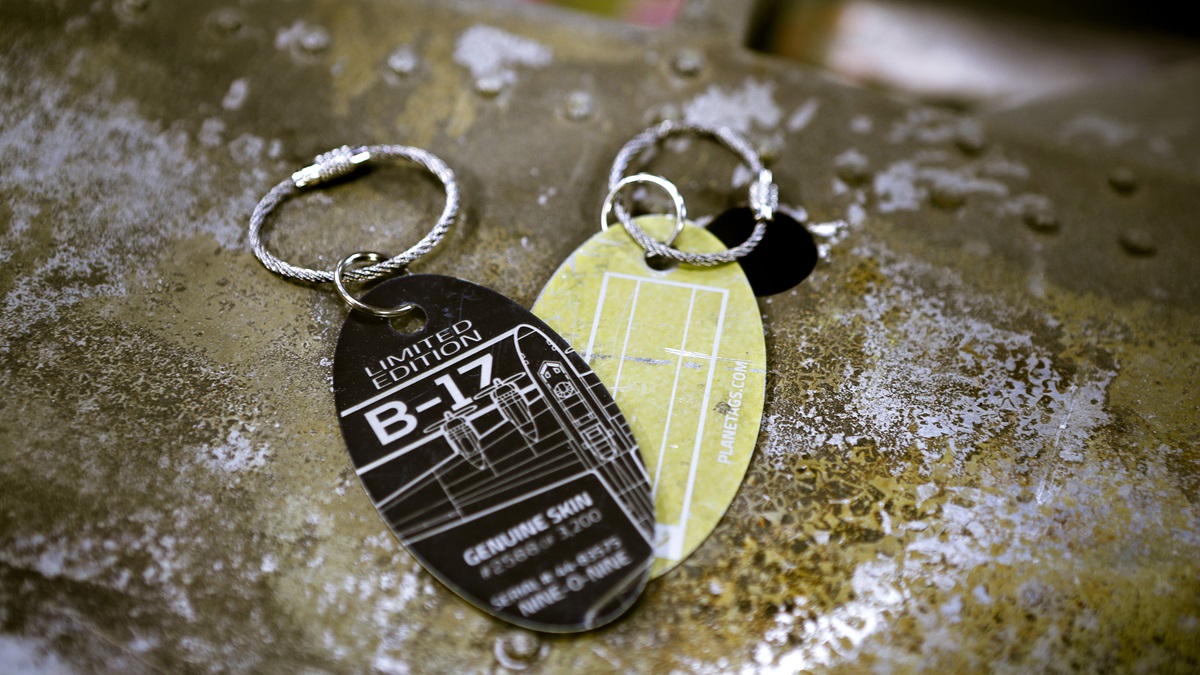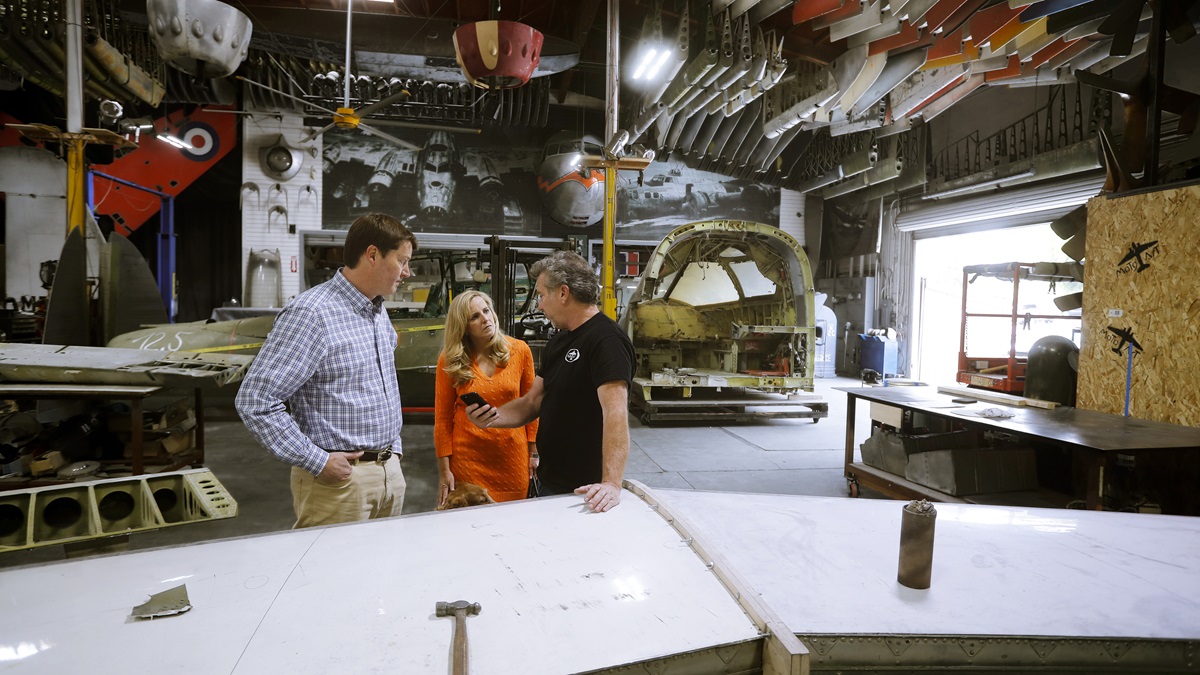Craftmanship: Aviation Artistry
MotoArt transforms aircraft into furniture—and more
One wouldn’t initially put two California sign designers in such an illustrious list of artisans. But when Donovan Fell and Dave Hall resurrected some old aluminum propellers, polished them, and made them statement art, collectors took notice. And when the pair took massive wing spars and engine parts and made them into furniture, those who appreciate the creative eye paid attention—and paid high prices to own a piece of MotoArt.
“We have multiple fabricators in the metal department who are incredible craftsmen. A key to our success is to surround ourselves with talented people.” Sixteen years after one of the most disastrous beginnings of a company—Fell flicked a cigarette into the bay of the truck carrying the first batch of propellers sold, and destroyed them all—MotoArt continues as the originator of aircraft-parts furniture. There are many imitators now—just as any artist is copied—and Fell has semiretired. But Hall continues to work at a frenzied pace, still providing the vision for one-of-a-kind pieces of furniture from aircraft parts and pieces he discovers at airplane boneyards and in basements and garages around the country. And he has a new money-maker up his sleeve; more on that in a moment.
Milo’s on the job
It’s a typical day in Los Angeles. The sun is out, the traffic is terrible, and no one appears to be bothered by much of anything. In El Segundo, a suburb in the shadow of the imposing Los Angeles International Airport, the unassuming MotoArt studios appear closed. A sign on the door says appointment must be made for tours. The pace of the day once inside the doors is almost too much for Hall and his assistant, Kitty Little, to handle. He’s bustling up and down the halls answering calls on his cellphone and directing the dozen or so metal fabricators and assemblers in the shop, and she’s fielding office calls and filling orders and telling visitors that now is not a good time; Hall takes the unannounced visitors on a tour anyway. Meanwhile the smell of something delicious emanates from somewhere in the building. Hall’s graphic and web designer Max Parker also has a studio here and he and his staff all recently started a vegan diet, so they are cooking for one another. Hey, this is California.
Trotting along beside Hall with his nose to the cooking smells and looking for a neck rub is Milo, shop dog, Hall’s best friend, and visitor greeter. When Hall and Fell decided to create MotoArt, they had some family opposition. Hall’s marriage didn’t make it, but he got Milo.
It did seem like a wacky idea: treasure hunt for aircraft pieces and make them into furniture. Fell was the mad scientist and Hall the hard businessman in the beginning, a shtick that helped them score a short-lived reality television show on the Discovery Channel, Wing Nuts, in 2004. While creating the television show, not much furniture was made. The momentum that had started with a feature story in the magazine Maxim and followed up in other titles such as Esquire and Men’s Journal had slowed to a crawl; many people believed MotoArt had gone out of business, when the show was canceled after just eight episodes.
“I just finally watched the Duck Dynasty show recently and my first thought was that whatever product they originally were famous for—was it duck callers?—they certainly weren’t making anymore,” Hall said. “The television show consumes everything and you end up making the commercial stuff that sells, and not your original product.”
What happens to old airplanes?
Hall was the kind of kid who collected model airplanes and ran around with his arms outflung, pretending to be an airplane, and Fell is a daredevil, but neither is a pilot. The propellers that Fell found and made into art as the partners’ first venture simply inspired him—and then inspired him to look at other aircraft parts differently.
He’d look at a wing and see a desk, at an exhaust and see a table, at a fuselage and see a bookshelf. The pair started making furniture and accents out of everything they found. “Most of our vintage parts we have collected over the past 17 years in various locations. Auctions, people restoring aircraft, and so forth,” said Hall. “Perhaps the biggest find we had was when Davis-Monthan [Air Force Base] stopped allowing outside commercial companies to obtain military airframes in 2001. My partner and I borrowed money and purchased truckloads of B–52 and F–4 Phantom parts...that were grandfathered in. Most commercial aircraft we can find in the Mojave desert as well as Roswell and Arizona.”
“People see us and what we charge and then think the airframes are worth gold. We kindly demonstrate to them that it sometimes takes 200 man hours to make it into what it is.”Fell’s enthusiasm was infectious—and overwhelming. Hall found himself trying to reign him in and attempting to streamline the manufacturing process. Soon they had showrooms across the world—China, Australia, Shanghai, Slovenia, Maryland. And they have sales representatives in all those locations, too. At the El Segundo shop, orders for everything from a Stratotanker sink to a DC–9 desk are in production, the fabricators and assemblers constantly at work on some new piece. Saws, lasers, and blowtorches rumble. From the ceiling hang fuselages, engine parts, nose art, reproductions. It’s an assault on the senses.
“We know what sells. Desks, conference tables, and reception desks for businesses,” said Hall. “So when we create a new design, we look for airframes that can accommodate these types of designs. It’s important for us to find frames in multiples so we can duplicate the piece and offer it in a limited edition. Take our DC–9 Wing Desk, we decided to use this airframe because it was a thin profile. You actually get your legs under it if you make it into a desk. We also knew that they were retiring the DC–9 so we had access to the airframe. To date we have sold well over 300 of these desks.”
Hall recently took delivery on his newest favorite thing—a sawed-in-half part of the cockpit of a B–1 bomber. It was found in a Pennsylvania barn along with parts of a Russian MiG–21. For the uninitiated, it’s hard to imagine what one would want with such a thing. But Hall has his great new idea.
Stamping out money
Hall is quick to say that his company does not salvage aircraft or parts that could fly or be used to fly again. All the material MotoArt uses for its pieces is from retired aircraft. He has a reverence for old aircraft and would never want to be accused of cannibalizing them. But when he discusses his newest venture, it’s hard not to think of cannibalism.
Ten years ago Hall used a piece of an aircraft skin to make a luggage tag for himself, and a dog tag for Milo. Milo has been a dog about town inadvertently advertising MotoArt’s new product—PlaneTags. On the oval surface of the tag is the name and specs of the aircraft the metal came from. On the flipside, the owner’s info. The tags are limited editions based on how much of the aircraft’s skin Hall has obtained. He didn’t think of manufacturing the tags until one too many people remarked on Milo’s tag. Then he found an ancient industrial punch press and started feeding the skin into the beast. Out pops the oval disks that he then has laser-etched with the aircraft information. The tags are sold on individual cardboard displays that have a short history of the aircraft and several interesting facts Hall discovers. He is keeping this one personal; Hall not only researches and writes the aircraft history, he comes in every morning before sunrise to personally fulfill each online order, wrapping the tag in its individual packaging. He and Kitty send out 100 or more each day. At anywhere from $25 to $85, that’s a lucrative venture. He’s scored aircraft skins from retired Southwest and United Boeing 737s, and he has corporate agreements with those companies. Hall’s latest score? The skin of Donald Trump’s retired Boeing 727. He’s going to need a bigger bank account.
Email [email protected]

